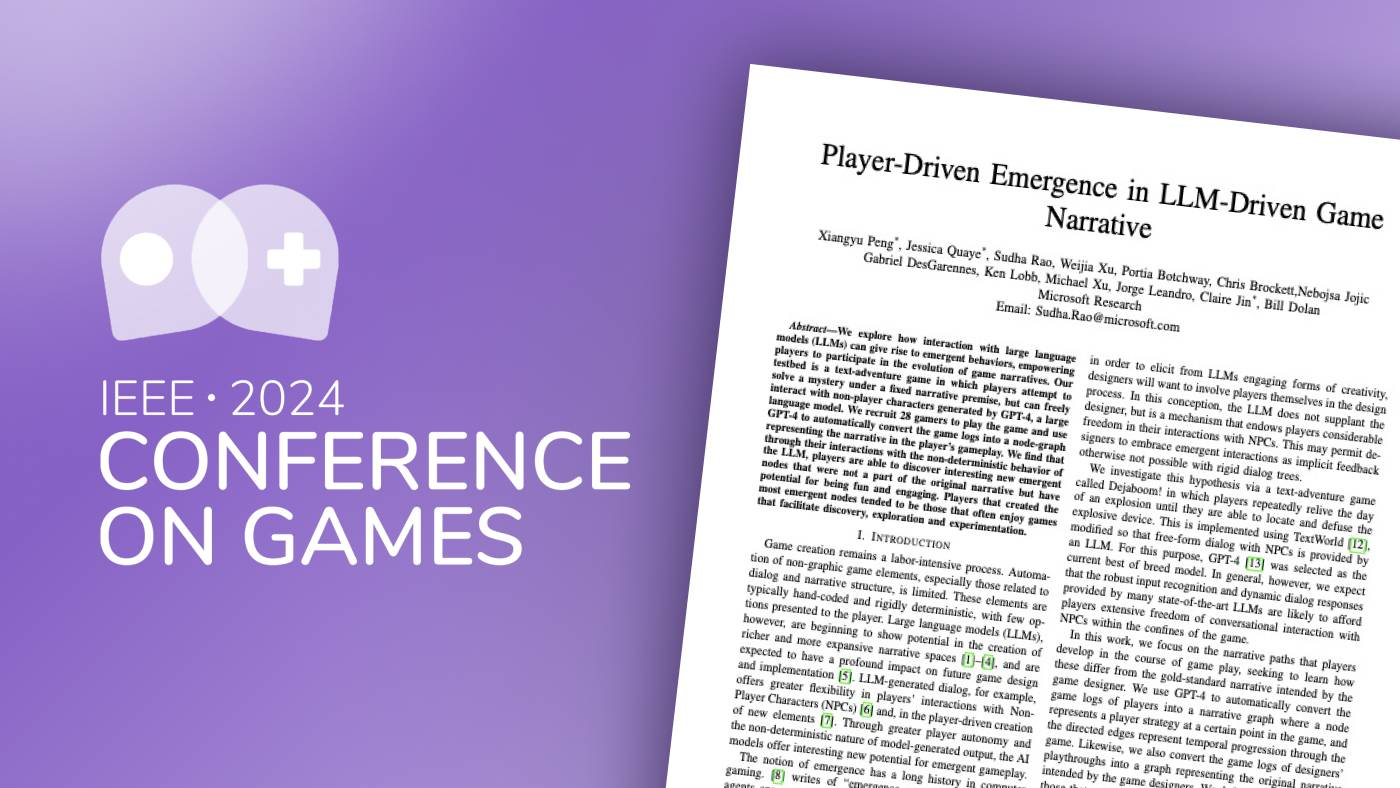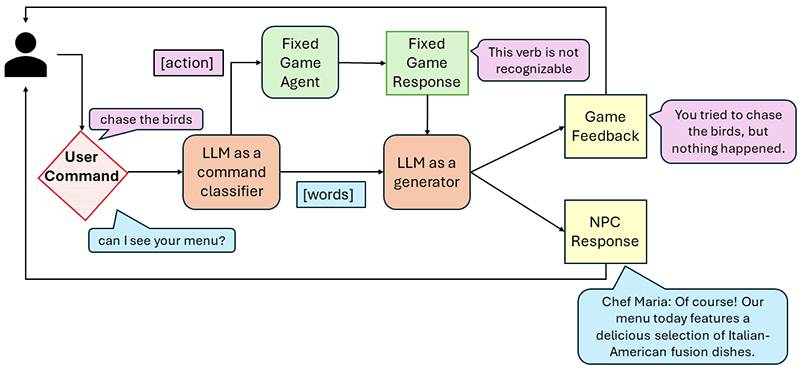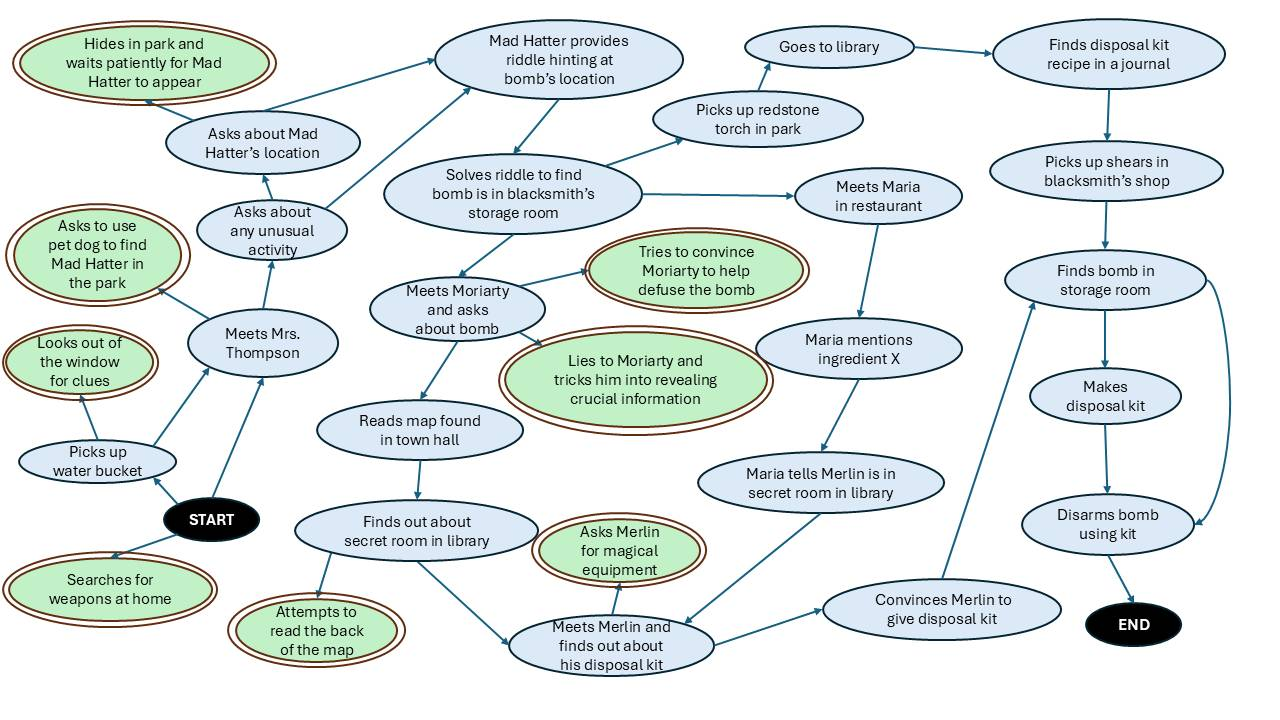包阅导读总结
思维导图:
文章来源:microsoft.com
作者:Brenda Potts
发布时间:2024/8/5 16:00
语言:英文
总字数:751字
预计阅读时间:4分钟
评分:90分
标签:游戏设计,大型语言模型 (LLMs),玩家驱动的叙事,游戏中的 AI,创意参与
以下为原文内容
本内容来源于用户推荐转载,旨在分享知识与观点,如有侵权请联系删除 联系邮箱 media@ilingban.com
This paper was presented at the IEEE 2024 Conference on Games (opens in new tab) (IEEE CoG 2024), the leading forum on innovation in and through games.

In the fast-evolving landscape of video game development, crafting dialogues and narratives is a labor-intensive endeavor. Traditionally, creating these elements involved meticulous hand-coding, resulting in static interactions that limit player agency. However, the rise of large language models (LLMs) is introducing possibilities for richer, more dynamic narrative experiences and automating some of the more challenging aspects of game creation. Despite this advance, a key challenge with using LLMs for narrative design in games is that, without human intervention, they tend to repeat patterns.
We address this in our paper, “Player-Driven Emergence in LLM-Driven Game Narrative,” presented at IEEE CoG 2024, where we explore how LLMs can foster unique forms of creativity when players participate in the design process. Rather than replacing designers, LLMs can empower players with considerable freedom in their interactions with nonplayer characters (NPC)—characters not controlled by the players but crucial for gameplay. These interactions provide implicit feedback for designers, offering insights unattainable with traditional dialogue trees—a branching structure of player dialogue choices affecting the narrative.
Creating and designing “Dejaboom!”
To test this hypothesis, we developed a text-adventure game called “Dejaboom!” The game’s premise involves a player waking up at home with déjà vu, recalling an explosion in their village from the day before. The objective is to relive the day and prevent the disaster. Players interact with five NPCs in the village. After a set number of steps, the bomb explodes, causing the player to lose all the items they gathered but retain memories of the NPC interactions. Figure 1 illustrates the game design.

We built the game using TextWorld, an open-source, extensible engine for text adventure games, modifying it to include dialogue with NPCs through OpenAI’s GPT-4 model. TextWorld provided the core game logic, while GPT-4 allowed for dynamic input and output—including both game feedback and NPC responses. Figure 2 illustrates our implementation of the game. In a conventional text game, this setup would allow only a fixed set of player commands and offer a predefined set of game responses. However, the use of GPT-4 allows the game’s input and output to be dynamic.

microsoft research podcast
What’s Your Story: Weishung Liu
Principal PM Manager Weishung Liu shares how a career delivering products and customer experiences aligns with her love of people and storytelling and how—despite efforts to defy the expectations that come with growing up in Silicon Valley—she landed in tech.
Opens in a new tab
Narrative analysis and user study
Our goal was to identify narrative paths that players create and how they diverge from the designer’s original narrative. We used GPT-4 to transform player game logs into a narrative graph, where a node represents a player’s strategy at specific points and directed edges (arrows) show game progression. We compared these to a graph of the designer’s intended narrative. We defined emergent nodes as those that appear in the narrative graph of players but are not present in the original narrative graph.
When we applied this approach to a user study with 28 gamers playing Dejaboom!, we found that players often introduced new strategies and elements, indicating a high level of creative engagement. Those generating the most emergent nodes tended to enjoy games that emphasize discovery, exploration, and experimentation, suggesting that such players are ideally suited for a collaborative approach to game development.

Implications and looking ahead
Our goal is to build methods that help empower game creators to create novel NPC experiences, design new narratives, and ultimately build entire new worlds through implicit player feedback and progressive application of advanced AI technologies. This work represents a foundational step, marking the start of a new paradigm of game development in which designers, players and generative AI models can collaboratively design and evolve games. Utilizing AI models introduces a new mechanism for capturing implicit player feedback through their emergent behaviors.
Opens in a new tab
